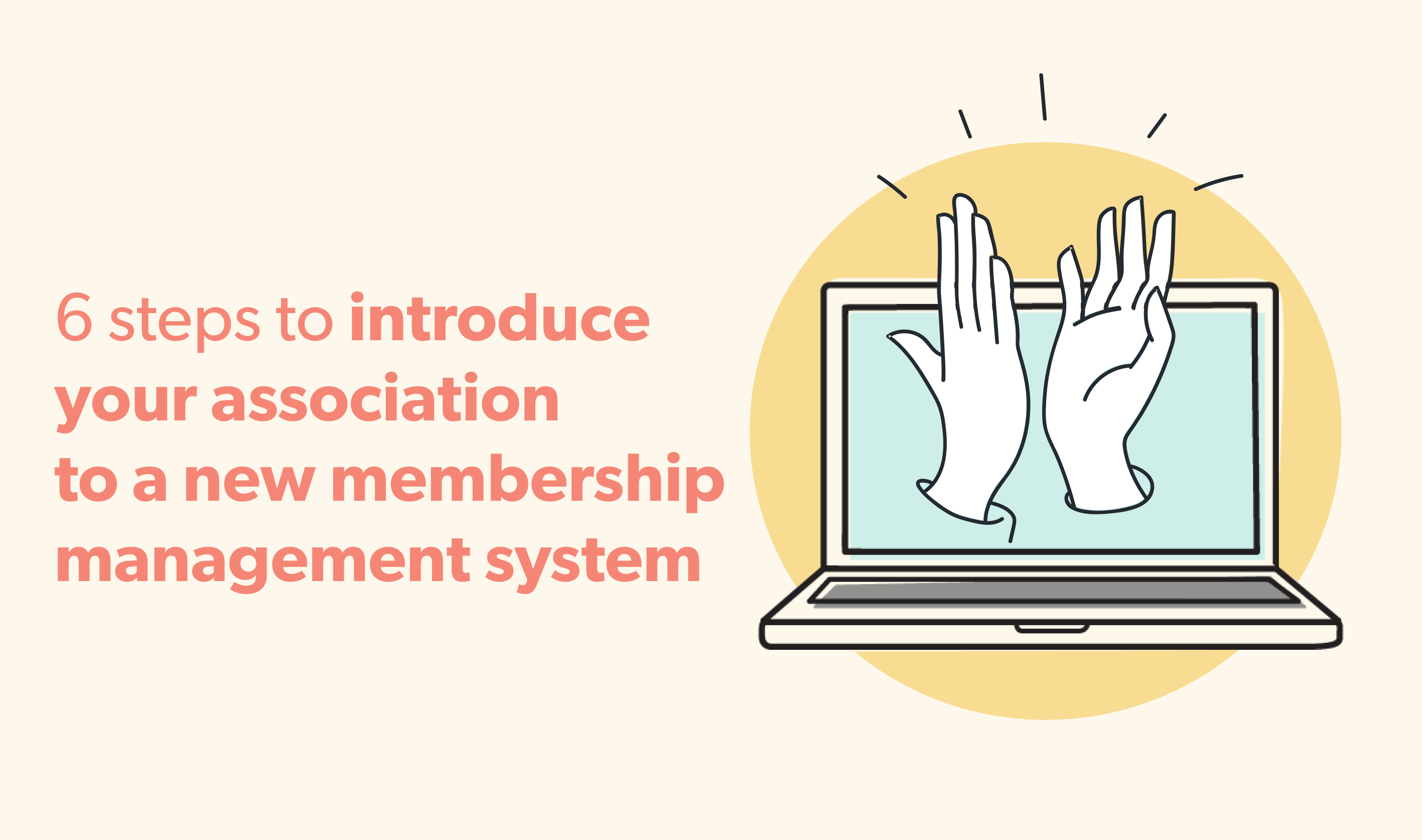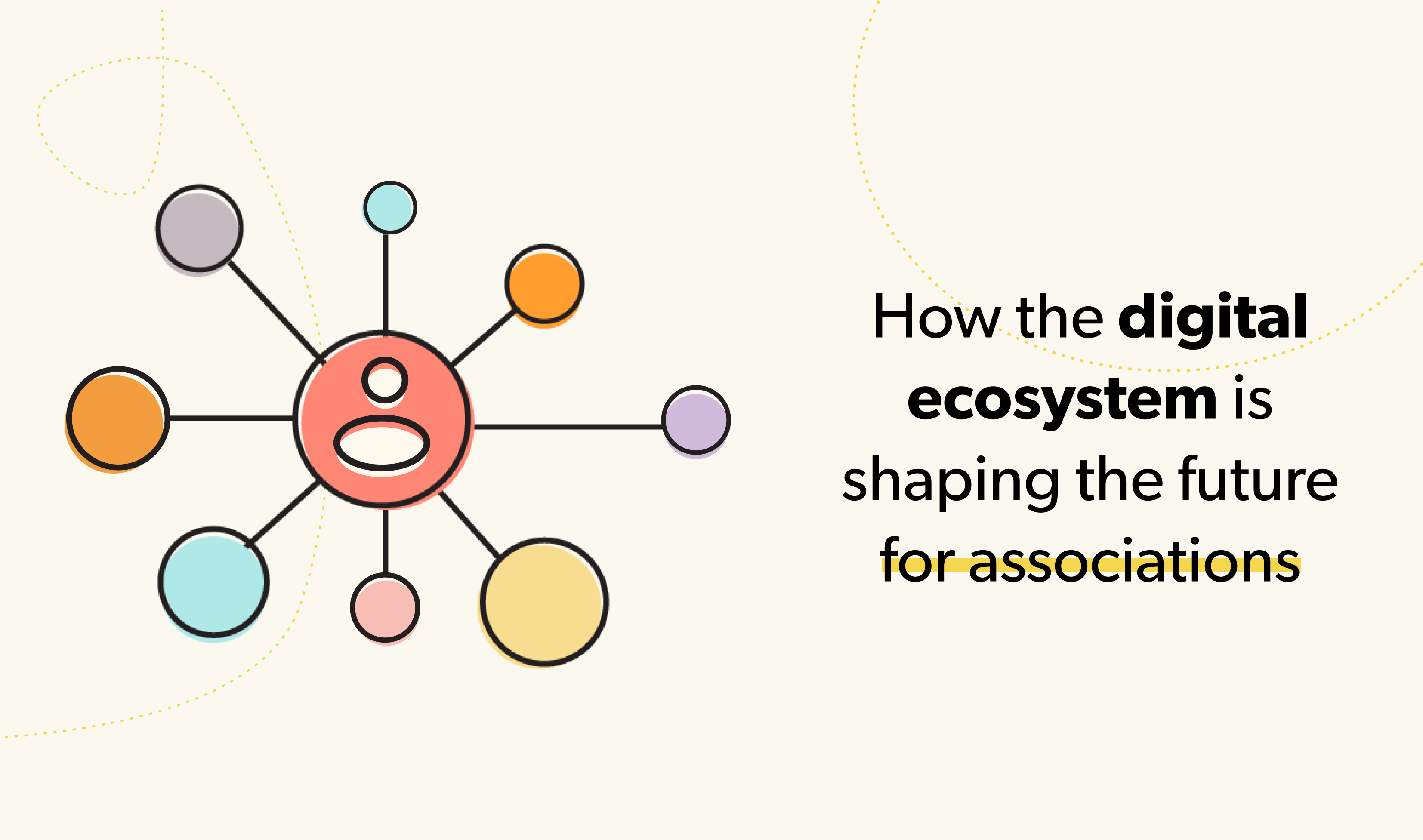Member Engagement Scoring should be Important to you

10 min read
Imagine your association’s membership renewal numbers have been falling for the past 3 years. Your spidey-senses tell you – year after year – there is disengagement between your association and a large segment of your members. But who are those disengaged members? Or conversely, who are your most engaged members?
It makes perfect sense to reach out to those disengaged members with information that is relevant to their interests. Alternatively, imagine your most engaged members reached out to your disengaged members on your behalf – even more powerful perhaps. It raises questions, such as; how can I identify the most and least engaged members at my association? And what does engagement mean to our association?
So, what does engagement mean?
Engagement is a subjective term. The definition of engagement is different to each association type. What engagement really boils down to is the relationship between an associations and their member. Engagement shouldn’t be confused with attitude, such as a “satisfied” member. Engagement goes further than that and includes behaviors.
Are your members a person or company?
We’ll pause here to differentiate between a professional and trade association. If you’re a professional association, your members are individual people. Your association interacts directly with the member – a person. If you’re a trade association, your members are typically defined as companies. You also directly interact with people – but these people are representatives of the company, which as a whole is a member of your association.
This is an important distinction to make. How your association defines member engagement is defined by the type of member you have. As a professional association, you think about behaviors expressed by a single person. As a trade association, you analyze a group of people or key stakeholders within the organization.
What does an engaged member look like?
To build upon your definition of engagement, which includes the relationship between your association and their members, including the analysis of behaviors – what does an engaged member look like?
An engaged member at a professional association is an individual person, whereas an engaged member at a trade association would be the total of how engaged the group of contacts at the member company are.
The most common signs of high member engagement are members who volunteer time to your association’s committees, working groups or sit on your board. But often it’s not a single activity or behaviour that can be directly correlated with high engagement. Instead, it’s a series of small behaviours (micro-engagement activities) that – when viewed together, give a measurement of high member engagement.
Micro-engagement activities:
- Attending your key annual event or tradeshow
- Nominating someone for an award
- Registering for webinars and other smaller scale events
- Logging into your website to access secure resources
- Opening your email marketing campaigns
- Starting or taking part in discussions in your online community
- Making a donation to your foundation
- Volunteering for a member spotlight feature on your website
- Taking part in your surveys
- Taking a course in your Learning Management System
- Writing an exam or completing their certification
- Purchasing a book or swag in your association’s online store
- Asking a question through your support portal
- Sharing or liking your social media posts
These micro-engagement activities are behaviours of your association’s members – better identified as engagement indicators. When considering how engaged a member is, the volume of interactions they have with your organization is unquestionably a measure of engagement. However, scoring your members on volume alone may not give a true indicator of engagement. To get a true picture, you need to introduce engagement indicator weighting.
Member Engagement Scoring: Weighing Indicators
Engagement indicators are typically tracked and measured as ‘touchpoints’, which represent every instance of those interactions between the member and your organization. However, not every touchpoint with your member should be scored equally.
For example, a member’s attendance at your largest annual conference could be considered a higher value touchpoint than a “like” by that same member on your most recent Facebook post. Weighting allows your association to indicate how much weight (importance) your various engagement activities should be given. The weight of your engagement indicators are then added up, identifying the most and least engaged members. A weighting system might look something like this:
Behaviour or Activity: Engagement Indicator | Weight Scale |
| Participates as a board member | 10 |
| Participates on committee(s) or working group(s) | 8 |
| Annual conference attendance | 7 |
| Webinar attendance | 5 |
| New post in online community | 4 |
| Reply to post in online community | 3 |
| Like or share a social post | 3 |
| Open email marketing campaign | 2 |
| Website login | 1 |
Let’s look at a couple of examples of how this weighting makes an impact.

Ginette is what you would consider to be a highly engaged member. She’s on your board, also sits on your Finance Committee, and attends your annual conference each year. Let’s assume Ginette does nothing more during the year to engage with your association. In a typical member engagement scoring scheme (without weighting), Ginette would have an engagement score of 3, having demonstrated 3 engagement behaviors (Board = 1, Committee = 1, Annual Conference = 1). But with the weighting described in the table above, Ginette’s score jumps to 25 (Board = 10, Committee = 8, Annual Conference = 7)!

Marco is what you would consider a moderately engaged member. He did attend your annual event, but the only other engagement was opening 2 of your email campaigns. Without weighting, his engagement score is the same as Ginette: 3 (Annual Conference = 1, Email Campaigns = 2). When we add in the weighting of the activities, Marco’s engagement score is much more reflective of his actual level of engagement at 11 (Annual Conference = 7, Email Campaigns = 4).
In this example, weighting has helped you to gain clarity at a higher level of granularity of who is a more engaged member based on the value of their behaviors. You now have a number representing each:
Ginette = 25
Marco = 11
This data clearly tells us that Ginette is more than twice as engaged as Marco. However, what’s more important is to compare each member’s score against the average and distribution of engagement scores of your entire membership body. Is Ginette one of your most engaged members? The number 25 on its own won’t tell you that, instead you need to calculate which percentile Ginette is in when compared to your total membership.
Knowing the percentile in which Ginette falls is of immense value. For example, if she is at the 75th percentile, you know that she’s more engaged than ¾ of your members.
The importance of time when calculating engagement scores and identifying trends
When looking at engagement scores, understanding the time period in which you are evaluating your members’ engagement is very important. In the example above, when comparing Ginette to Marco, what time period are we looking at? We can assume we’re looking at engagement over the current membership season (if you have one) or over the calendar year. Understanding the time period you are measuring, and positioning yourself to compare time periods and see trends, gives you incredible insights.
In an ideal scenario, engagement scoring wouldn’t just be real-time, it would also show historical data. Today, Ginette has an engagement score of 25, or the 75th percentile, over the past 12 months. What was her engagement in the previous 12 months? Does her engagement fluctuate over the calendar year, or is it consistent? How does Ginette compare to other members within the same percentile range, i.e. the top 25% of all members based on engagement?
The key here is understanding that engagement isn’t a one-time snapshot, it’s instead a historical record of engagement for each member. Ideally, you put yourself in a position (by collecting data) to assess engagement scores for each member (or group of members) in any time period.
What about monetary value as part of engagement scoring?
Another interesting variable that can be considered as part of engagement scoring is dollars spent. Do you consider Ginette – who spends $2,500 per year with your organization – to be more engaged than Phil – who spends $1,200 – but has the same engagement score?
Perhaps Phil’s membership tier is as an entry-level (i.e. a recent grad or student), whereas Ginette is a full member. Ginette paid more for her membership, and also paid the full member price for your annual conference, whereas Phil had significant discounts on both. Is Ginette more engaged than Phil? I won’t try to answer that question for you, as each organization is different, but what’s important is to make a conscious decision as to whether or not dollars spent has any impact on engagement scoring.
If you decide it does, you need to determine how to apply additional weighting based on dollars spent. In the end, you’ll need to define a formula that makes the most sense to your organization, balancing the impact of dollars against your other engagement measurements.
Why is member engagement scoring important?
Associations know that increasing member engagement is key to membership retention and growth. Member engagement scoring gives you, an association leader, the information you need to make strategic decisions. Any recommendations you make to your executive team, your board, or a committee that can be backed up by data showing trends in member engagement, or lack thereof, will be taken more seriously. Data-informed decisions are the best decisions you can make.
What can you do with member engagement scoring data?
Empowered with member engagement scoring data – and with the buy-in of your board and executive team – now you can take action. Let’s look at some example of trends that you may identify when looking at your engagement scoring data:
- Your most engaged members are in the 50 – 65 age range
- Members who reside on the East Coast, closer to where you are headquartered, have a higher level of engagement
- Members who reside in large urban centers are more engaged than those living in rural municipalities
- Members in the 25-35 age range have a high volume of engagement activities but tend to not take part in committees or attend your annual event
- Members who attend your annual conference have – on average – a higher overall engagement score than those who don’t
Using this data, you can start developing outreach campaigns to increase engagement with specific membership groups across geographic and demographic segments. Knowing who your most engaged members are can help you to develop programs to engage those members in outreach campaigns to your lower-engaged segments.
The sky’s the limit for developing initiatives once you have the data in front of you.
How do you get started?
Member engagement scoring is a powerful approach to amplify membership growth, or identifying strategic initiatives in light of membership churn. If you aren’t using member engagement scoring today, where and how do you get started? It starts and ends with access to your data. Your membership data might be stored in an AMS, CRM, a Member Data Platform (MDP) like Wicket, or even spreadsheets.
Whatever your source, knowing you have a system of record for your member data is the key starting point. And within that database, ensuring you have detailed demographic and geographic data on each member is of vital importance.
From there, you must answer the question of where and how engagement happens. What software tools are used across your organization that impact engagement? Most likely the answer is that you have many software tools with many data sets that need to be reconciled. If you have a Data Scientist on your team, this is nothing more than a fun challenge, however, most associations aren’t so lucky. Going outside of your organization to find a consultant with expertise in data analysis, business intelligence (BI) and reporting might be your next best option.
In the end, to be able to measure actual member engagement, you need to be able to reconcile your various data sets against your membership data. This can be done by creating spreadsheets, by connecting all of your data sources with a Business Intelligence (BI) platform, or by leveraging a Member Data Platform (MDP) like Wicket, that is built to record engagement across all the software tools you use. The first step is understanding where your data lives, and then identifying how you can leverage that data with a strategic approach like member engagement scoring.




